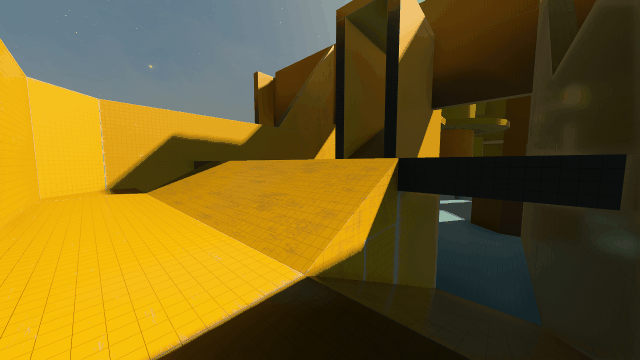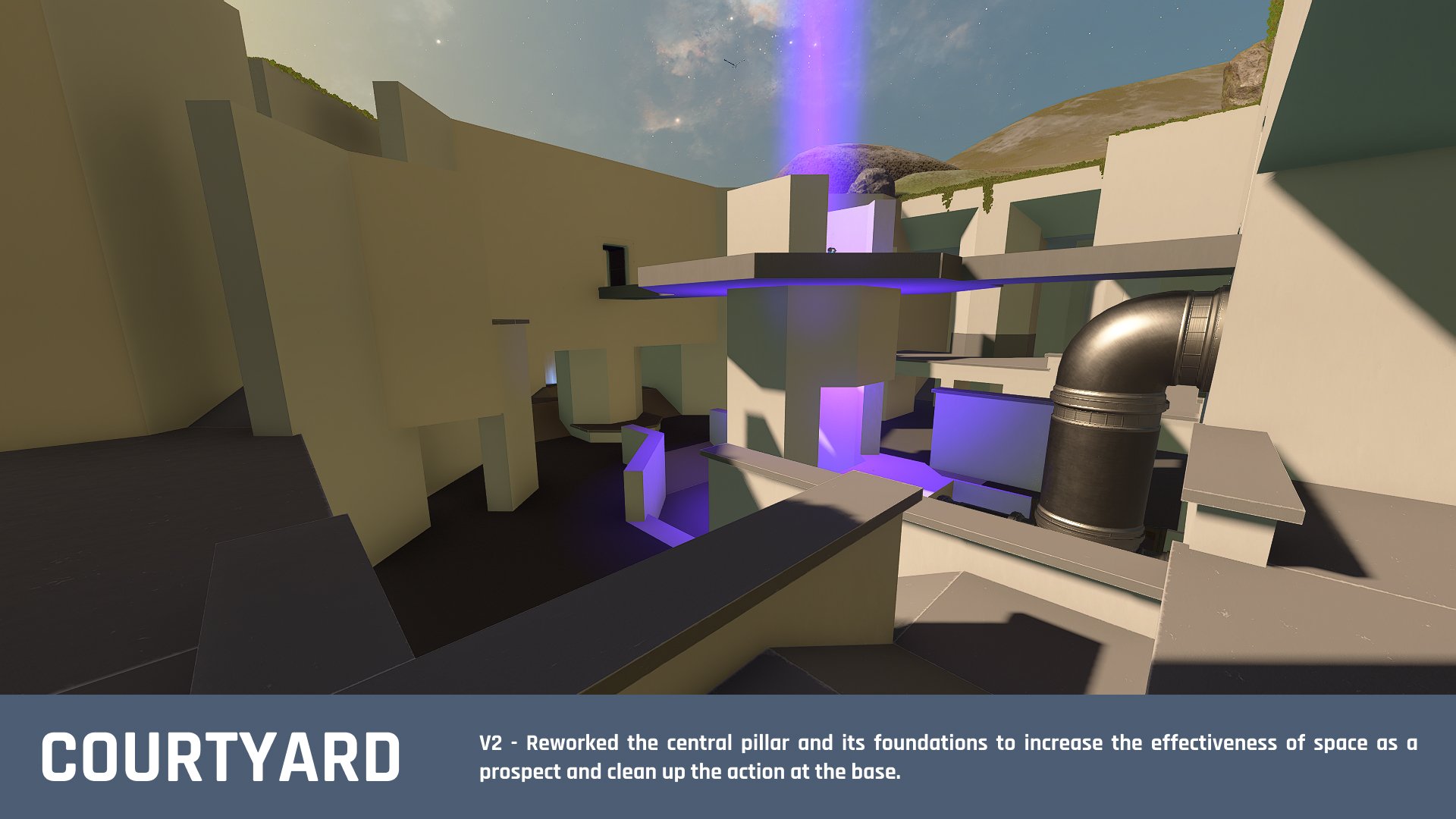
A competitive arena for Halo Infinite built following the path laid ahead by classic maps of the series, focusing on architecture principles and exasperated verticality to deliver a tense and hectic experience.
Solo
3 Weeks
Forge
Multiplayer
Xbox
ROLE AND TASKS
Using the tools and tech available inside Halo Infinite, I developed and followed a pipeline that brought me to the creation and release of a competitive multiplayer arena.
Designed and developed the flow of the combat in the playspaces
Gathered playtesting data from the Halo community and iterated following the results
Designed and iterated on the weapon sandbox and pick-up placement
Designed and iterated on the possible objectives and game modes
Tuned the necessary technical aspects for the multiplayer experience
Applied architectural principles for the navigation and affordance of the environment
Playable Halo Waypoint
THE GREAT JOURNEY
Understanding the design intent behind maps in the previous entries of the series has been essential to fully understand what makes them memorable and how they create exiting play spaces.
LEARNING
Exploring and accepting the limitations of the in-game tools allowed me to make more informed decisions when whiteboxing and set up an iteration pipeline that would take them into account.
IMPLEMENTING
Thanks to the support of the game’s community, testing and iteration happened regularly, improving the play spaces over time, and reaching my goal for the development and intended player experience.
ITERATING
PLAYER EXPERIENCE
Constant movement and hectic action where every choice is relevant and teamwork is crucial for the success of a match.
DESIGN INTENT
The aim is to deliver a hectic player experience using architecture to flow players seamlessly around the environment and converge them into tense killboxes where cooperation is the only key to success.
USP
A competitive environment with exasperated verticality and a central pivot courtyard that gives a complete overview of the state of the match.
WELCOME HOME
The placement of weapons, pick-ups, and equipment on the map has been carefully iterated to bring players into the no man’s land and give them the best tools to overcome the possible challenges that they might face from where they stand.
The selection of items aims at enhancing the characteristics of the map, giving players tools to exploit the verticality, thanks to the grapplehook and long-ranged weapons, or close saturate chokepoints with grenades and ravager’s charged shot. This allows players to build tactics and pushes them to strategically think about the pick-ups to overcome the opponents, making them an integral part of the map’s gameplay loop.
Even though the map is set up for all the official objective-based game modes the game offers in its competitive experience, the map performs best when the objectives move and enhance the flow of players on the map, truly adapting to the nature of the environment.
Capture the Flag and Oddball push players to confront each other not only directly, but carefully planning the use of chokepoints and verticality to stall the opponents and bring their team to victory. King of the Hill and Stronghold still work on the map and the environment retains its characteristics and experience, but they have not been the focus of the development and the layout does not have the structure to support their competitive play.
PILLARS
The environment and the sandbox elements have to create situations in which the correct course of action is dubious, and well-executed high-stakes strategies are rewarded.
RISK AND REWARD
The map has to push players towards collaboration and communication, with an environment capable of creating situations where team play is the only feasible option.
COMRADERY
The play spaces have to drive players towards clearly identifiable contact points, naturally sparking action and forcing players to build strategies to overcome the opponents.
CHOKE POINTS
Level Design Pillars have been used to drive the design decision during the various iterations and ensure coherence with the original game, design intent, and player experience.
MISSIONS CHANGE, THEY ALWAYS DO
The contact with the Halo community gave me access to precious playtest data to work with, confidently informing design decisions, improving the flow of the play spaces, carefully balancing the interactions between the sandbox elements, and driving the development of the level towards the intended player experience.
WHAT IS THIS PLACE?
The reason the project exists is to try out architectural concepts that can help drive the players through the environment and manipulate their experience modifying the shapes and volumes of the play spaces.
One of these concepts is Prospect and Refuges. Differentiating the functionality of the various environments, the map can clearly communicate the threat level, forcing players to think and evaluate before taking action.
Another architectural concept is the circulation of players in the space, creating a constant movement loop that pushes the players to cycle the map and gives them awareness of the various options the play spaces offer.
To improve the playability of the spaces and deliver a smoother experience, the environment has custom collisions applied to even the playing field and make sure the characters behave according to the game’s laws and do not negatively impact the gameplay.
The game also contains AI characters that behave exactly like players do, and to make sure they operate correctly the map went through multiple iterations to implement AI environmental components necessary for their behaviour.
YOU LOOK NICE
The development of Search has been a great opportunity to put architectural knowledge into practice, applying principles and tools to drive the behaviors of the players and convey the player experience I was aiming for, only using the environment as a means of communication.
It has been a great way to interface with the community the game has, understanding what affectionate players like, how they act, and how they are ready to spend time to help the game improve and create better levels that can deliver experiences they can fully enjoy.
Developing the level has also been an opportunity to test myself with Level Design Tools that are far from the game engines I am accustomed to. Setting up a development pipeline that could allow me to keep my work ordered and the iteration process fast has been instrumental to iterate successfully and deliver my design intent.



















